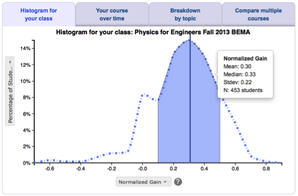
Intermediate Mechanics Tutorials
Developed by: Michael C. Wittmann and Bradley S. Ambrose
Level










middle schoolhigh schoolintro collegeinter-mediateupper levelgrad school other




middle schoolhigh schoolintro collegeinter-mediateupper levelgrad school other
Topics


Setting








Overview
What? Small-group learning materials for teaching intermediate mechanics. A mix of conceptual, mathematical, and problem-solving activities, as well as related research results, examination questions, and suggested course outlines. Newtonian focus with very little Lagrangian formalism.
Topic outline
- Velocity-dependent forces (2 tutorials)
- Oscillations: Simple harmonic and non-harmonic oscillations (3 tutorials)
- Oscillations: Damped and/or forced oscillations (4 tutorials)
- Oscillations: Phase space diagrams (3 tutorials)
- Vector force fields (3 tutorials)
- Orbital mechanics and central forces (4 tutorials)
- Non-inertial reference frames (3 tutorials)
- Generalized coordinates and Lagrangians (2 tutorials)
Instructor effort required
- Medium
Resources
Developer's website: Intermediate Mechanics Tutorials
Intro Article: B. Ambrose, Learning about Student Learning in Intermediate Mechanics: Using Research to Improve Instruction, presented at the Physics Education Research Conference 2009, Ann Arbor, Michigan, 2009.
Teaching Materials
You can download the Intermediate Mechanics Tutorials for free from the developers' website.
Research
RESEARCH VALIDATION
This is the third highest level of research validation, corresponding to:
- at least 1 of the "based on" categories
- at least 1 of the "demonstrated to improve" categories
- at least 1 of the "studied using" categories
Research Validation Summary
Based on Research Into:
- theories of how students learn
- student ideas about specific topics
Demonstrated to Improve:
- conceptual understanding
- problem-solving skills
- lab skills
- beliefs and attitudes
- attendance
- retention of students
- success of underrepresented groups
- performance in subsequent classes
Studied using:
- cycle of research and redevelopment
- student interviews
- classroom observations
- analysis of written work
- research at multiple institutions
- research by multiple groups
- peer-reviewed publication
References
- B. Ambrose, Investigating student understanding in intermediate mechanics: Identifying the need for a tutorial approach to instruction, Am. J. Phys. 72 (4), 453 (2004).
- B. Ambrose, Probing Student Reasoning and Intuitions in Intermediate Mechanics: An Example with Linear Oscillations, presented at the Physics Education Research Conference 2006, Syracuse, New York, 2006.
- B. Ambrose, Learning about Student Learning in Intermediate Mechanics: Using Research to Improve Instruction, presented at the Physics Education Research Conference 2009, Ann Arbor, Michigan, 2009.





